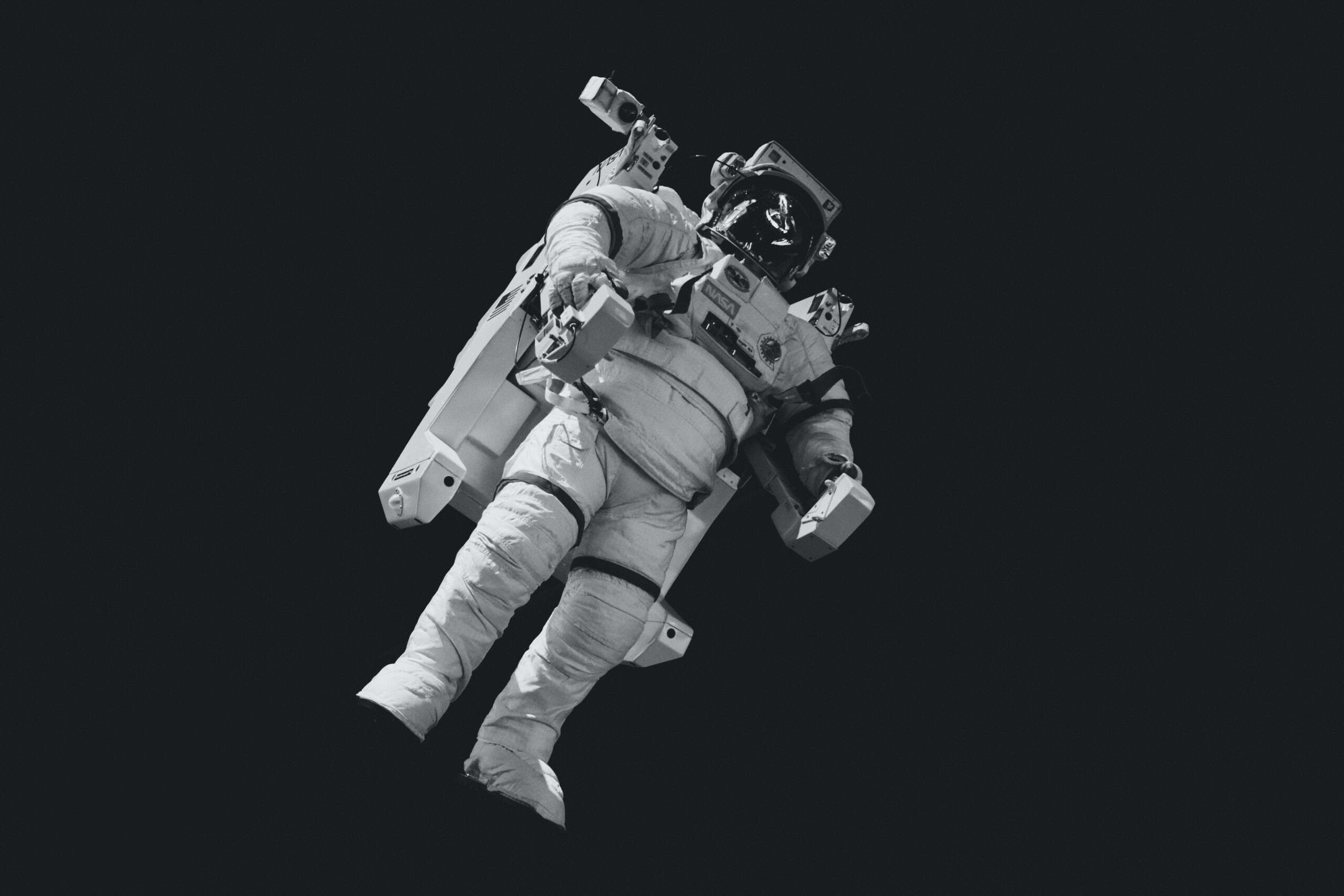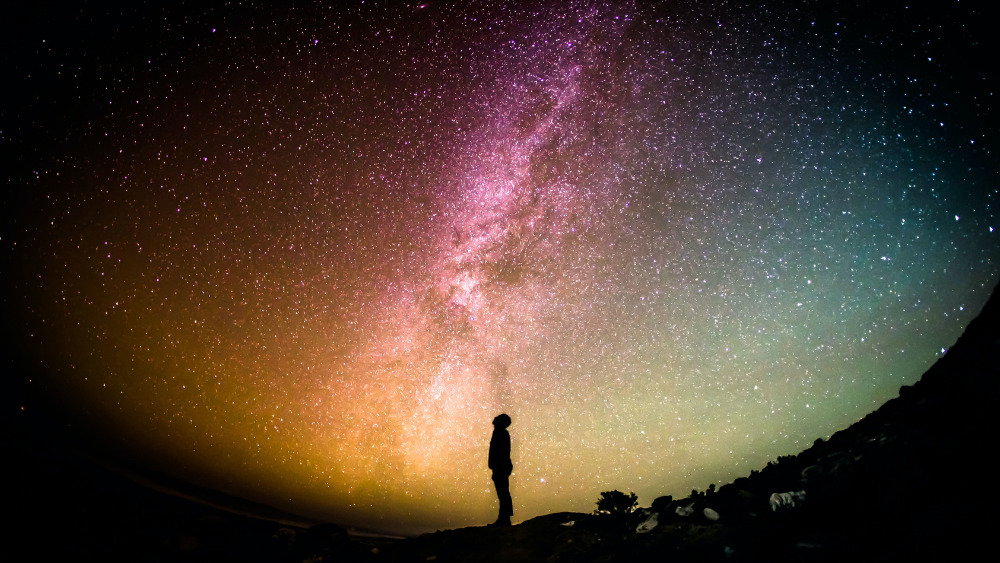It seems to me the Incarnation is the defining doctrine for Christians. If Jesus of Nazareth is God incarnate, then he shows us what God is like. What happens in the Incarnation is really the hinge on which history turns. It really is a game-changer. It makes you see the whole of history differently.
It’s one thing to have someone who’s a prophet communicate to you a message from God, or a story that tells of some miraculous occurrence that displays the power of God. But for someone to tell you that they are God, that they can tell you about the character of God, that is a completely different order of message. If the Christian message is true and Jesus of Nazareth is God incarnate, then we can see God through what’s reported of the life and work of Christ. That is a very significant claim.
A mind-blowing meld
In order to unite us to God, God has to provide someone who is fully human and fully divine, a kind of interface between humanity and God, between creation and the divine.
I think of the Incarnation as fundamentally the second person of the Trinity, God the Son, assuming human nature, in order that, as one who is both fully divine and fully human, he may bring about reconciliation of human beings, who are merely human, with God.
Somehow you’ve got, in this one entity, these two natures, that are not melded together into something else, that aren’t fused in some way into some odd superman or some odd divine being that appears to be human, but really is both human and divine at one and the same time.
It’s precisely because of that relationship that you can have this idea of participation in the divine life. I think that is really a mind-blowing notion when you try and wrap your head around it. It really is something that should change everything.
God the Son takes on human nature, in order that he may walk around in the hostile environment of a sin-filled, material world.
Jesus the astronaut
Thomas Aquinas, the great medieval theologian, talks about the Incarnation at various points as like a robe with which God the Son clothes himself in order that he may bring about our salvation. There’s something to be said of that.
But it’s something more intimate, the relationship between his divine and human nature, than putting on a suit of clothes that you can discard without any problem. Perhaps it’s a bit more like a spacesuit which the astronaut has to have a particular interface with in order to walk around in the hostile environment of space. Similarly, God the Son takes on human nature, in order that he may walk around in the hostile environment of a sin-filled, material world.

Some people think of it in terms of a deep-sea diving suit. Similar idea, that you put on this apparatus, this suit that fits you in a particularly unique way in order that you can occupy a space that otherwise you couldn’t occupy. In the case of the Incarnation, of course, that space is our world.
By its very nature, a model is going to be a simplified description that approximates the truth of something that’s much more complex. But I’ve found that family of pictures of what the Incarnation is about very helpful as a way of trying to get at just what it means to say that Jesus of Nazareth, this person that walks around first century Palestine, this peasant prophet, is not merely another human being amongst human beings, but is actually somehow, in addition to being a human being, God himself walking amongst us.
Maybe Christ is like the prototype human being.
The images of the image of God?
One could read the biblical record as saying that Christ is the image of God. We read this in Colossians (1:15) and Hebrews (1:3).
We’re also said to be made in the image of God, of course, in the primeval prologue of Genesis (1:27): “In the image of God He made them; male and female he created them.”
Christ is the one who is made in God’s image because he, himself, is divine. He is the divine person united to human nature. As that unique interface between God and human beings, he images God in a way that nothing else can.
What if God created human beings in order that they might image him, in order that they might be united to him, in order that we might participate in the divine life? And in order to bring that about he had to ensure that Christ was the God-man – this interface, the image.
It’s a bit like a car prototype. You have the prototype. You have the blueprints for the prototype. You run the prototype. You run the tests. It works, and then you make the production-line model.

In a sense, maybe Christ is like the prototype human being. We are the production-line models. Because Christ is the image of the invisible God, we image God as we’re made, in the image of the prototype.
If we think of our being made in God’s image in that Christological sense — in a way that’s formed in a deep way by who Christ is — that makes a significant difference to how we view ourselves in relation to God, not just in terms of our makeup as human beings, but also in terms of what we’re destined for as human beings and how we ought to be living.
I think we could take this slightly further. In this analogy of the prototype in the production line model, maybe God has made us all so that we have something like a God-shaped port into which God may ‘upload himself’, as he has in the case of Christ in becoming incarnate.
For the rest of us, God doesn’t upload himself like a computer program, as it were, into our human nature. That’s why we’re human persons, independent of God. In the case of Christ, He does upload himself into the human nature of Christ. That’s why Christ’s human nature is not a person independent of God, but is in fact God’s human nature.
There is a human face to God. That should be mind-blowing.
Disrupting domestic Christmas
Ways of trying to disrupt our domestication of Christmas I think are very helpful, often. Ways of making us see things differently in order that we are sort of jolted out of our normal ways of conducting ourselves in the Christmas season: we’ve got to get the presents, we’ve got to get the tree, we’ve got to get, you know, whatever it might be. Making us sit up and realise there’s something different going on here.
I remember seeing the film Man of Steel. The premise for that film was to try and get us to see the Superman myth in a slightly different way; to present him as an alien, basically – someone who came from an alien civilization, and so is not human. He may look like us, but he’s not one of us. He comes from a different planet somewhere far away.
To treat Superman as a kind of E.T. is a rather different take on the Superman myth. It’s the same information, but it’s re-packaged in a way that makes us sit up and think, “Mm, this is not what we thought.”
Fundamentally, this is not someone that we can fully understand or apprehend. This is someone who is beyond us.
We can do that with Christmas in a way that could be helpful and make us sit up and think that there’s something here about this message which is touching on a mystery – that somehow God breaks into the history of humanity and assumes a human nature in order that he may become one of us, so that there is a human face to God.
If we pause for a minute, take a step back from our “Gentle Jesus, meek and mild” images, and think about what that statement really entails, it should be mind-blowing. It should make us see the Incarnation in a wholly different light, a light that sort of explodes the domestic Jesus.
Recapturing something of the mystery of the Incarnation … Although there are aspects of what Christ has done and who Christ is that we can comprehend, because they’re revealed to us in Scripture, fundamentally this is not someone that we can fully understand or apprehend. This is someone who is beyond us.
That seems to me a vital component of the Christmas message that sometimes in our contemporary culture we’re in danger of losing.
Father, at this advent time, we contemplate the coming of Your Son into the world.
Help us to wonder anew at the glory of the Incarnation.
Help us to see afresh the beauty of the face of God written on the Baby Jesus.
Enable us to understand something deeper and richer and greater of this most central mystery of our Christian faith, that God has been made man and dwelt among us, that we have beheld His glory, the glory as of the only begotten of the Father, full of grace and truth.
In Christ’s name, we pray.
Amen.
This article is adapted from an interview with Oliver Crisp, first published by Biola University’s Centre for Christian Thought, and republished here with permission.
Oliver Crisp is Professor of Analytic Theology at the University of St Andrews.


